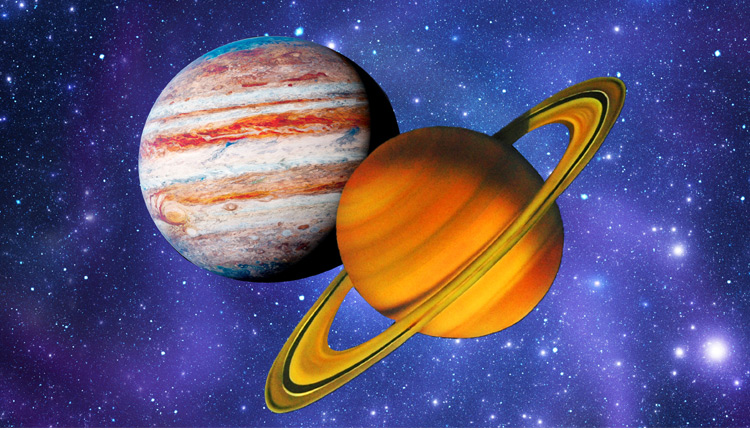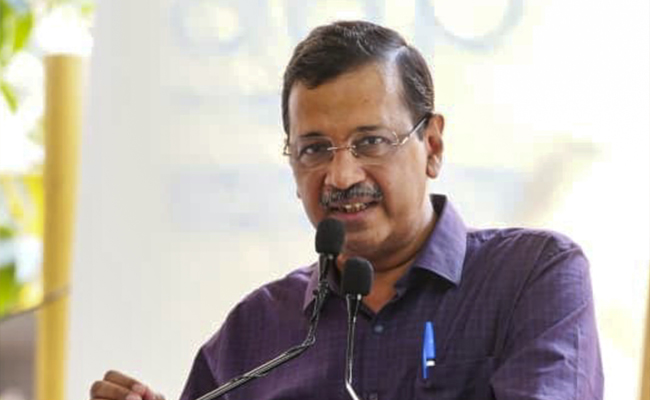Cape Canaveral (US), Dec 20: Jupiter and Saturn will merge in the night sky Monday, appearing closer to one another than they have since Galileo's time in the 17th century.
Astronomers say so-called conjunctions between the two largest planets in our solar system aren't particularly rare.
Jupiter passes its neighbour Saturn in their respective laps around the sun every 20 years.
But the one coming up is especially close: Jupiter and Saturn will be just one-tenth of a degree apart from our perspective or about one-fifth the width of a full moon.
They should be easily visible around the world a little after sunset, weather permitting.
Toss in the winter solstice in the Northern Hemisphere, the longest night of the year and the summer solstice in the Southern Hemisphere and this just-in-time-for-Christmas spectacle promises to be one of the greatest of Great Conjunctions.
What is most rare is a close conjunction that occurs in our nighttime sky," said Vanderbilt University's David Weintraub, an astronomy professor.
"I think it's fair to say that such an event typically may occur just once in any one person's lifetime, and I think 'once in my lifetime' is a pretty good test of whether something merits being labeled as rare or special.
It will be the closest Jupiter-Saturn pairing since July 1623, when the two planets appeared a little nearer.
This conjunction was almost impossible to see, however, because of its closeness to the sun.
Considerably closer and in plain view was the March 1226 conjunction of the two planets when Genghis Khan was conquering Asia.
Monday's conjunction will be the closest pairing that is visible since way back then.
Saturn and Jupiter have been drawing closer in the south-southwest sky for weeks. Jupiter bigger and closer to Earth is vastly brighter.
I love watching them come closer and closer to each other and the fact that I can see it with my naked eyes from my back porch! Virginia Tech astronomer Nahum Arav said in an email.
To see it, be ready shortly after sunset Monday, looking to the southwest fairly low on the horizon.
Saturn will be the smaller, fainter blob at Jupiter's upper right. Binoculars will be needed to separate the two planets.
Despite appearances, Jupiter and Saturn will actually be more than 450 million miles (730 million kilometers) apart. Earth, meanwhile, will be 550 million miles (890 million kilometers) from Jupiter.
A telescope will not only capture Jupiter and Saturn in the same field of view, but even some of their brightest moons.
Their next super-close pairing: March 15, 2080.
Let the Truth be known. If you read VB and like VB, please be a VB Supporter and Help us deliver the Truth to one and all.
Panaji (PTI): As part of a crackdown against tourist establishments violating laws and safety norms in the aftermath of the Arpora fire tragedy, Goa authorities on Saturday sealed a renowned club at Vagator and revoked the fire department NOC of another club.
Cafe CO2 Goa, located on a cliff overlooking the Arabian Sea at Vagator beach in North Goa, was sealed. The move came two days after Goya Club, also in Vagator, was shut down for alleged violations of rules.
Elsewhere, campaigning for local body polls, AAP leader Arvind Kejriwal said the fire incident at Birch by Romeo Lane nightclub at Arpora, which claimed 25 lives on December 6, happened because the BJP government in the state was corrupt.
An inspection of Cafe CO2 Goa by a state government-appointed team revealed that the establishment, with a seating capacity of 250, did not possess a no-objection certificate (NOC) of the Fire and Emergency Services Department. The club, which sits atop Ozrant Cliff, also did not have structural stability, the team found.
The Fire and Emergency Services on Saturday also revoked the NOC issued to Diaz Pool Club and Bar at Anjuna as the fire extinguishers installed in the establishment were found to be inadequate, said divisional fire officer Shripad Gawas.
A notice was issued to Nitin Wadhwa, the partner of the club, he said in the order.
Campaigning at Chimbel village near Panaji in support of his party's Zilla Panchayat election candidate, Aam Aadmi Party leader Kejriwal said the nightclub fire at Arpora happened because of the "corruption of the Pramod Sawant-led state government."
"Why this fire incident happened? I read in the newspapers that the nightclub had no occupancy certificate, no building licence, no excise licence, no construction licence or trade licence. The entire club was illegal but still it was going on," he said.
"How could it go on? Couldn't Pramod Sawant or anyone else see it? I was told that hafta (bribe) was being paid," the former Delhi chief minister said.
A person can not work without bribing officials in the coastal state, Kejriwal said, alleging that officers, MLAs and even ministers are accepting bribes.





